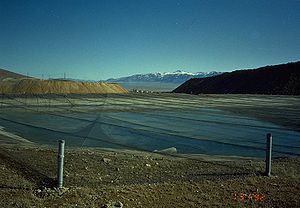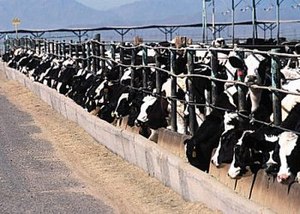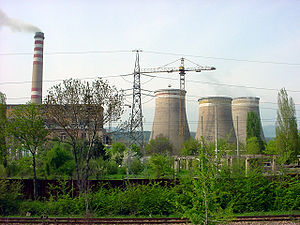By
Fred Tutwiler
We've been actively and passively encouraging BP to do exactly what they were doing when the Deepwater Horizon exploded. According to John Hofmeister, former CEO of Shell Oil, this crisis is actually the unavoidable outcome of the twisted relationship that exists between oil companies, politicians and the voting public.
Oil Companies
Oil companies are driven to make huge short term profits. No secret there. Many argue that they have a moral responsibility to do just that because they owe it to their stockholders. They are, after all oil companies. The latest outrage from our British cousins demonstrates the very point. BP may not be able to pay the dividends and returns they have come to rely on. A LOT of people expect oil companies to make wads of money. When they don't, those folks get really pissed.
Politicians
At the same time, the last eight American presidents, and the last EIGHTEEN congresses, have patriotically trumpeted the impossible aspiration of "dependence from foreign oil". The con only works if you pretend that we can achieve this sham by drilling for more oil in U.S. controlled reserves.
TA DA! No surprise that the oil companies' thirst for money, and the politicians' thirst for power ended up on a common path - drill, Baby, drill! According to Hofmeister, everything that happened leading up to the tragic blowout in the Gulf is simply an inevitable result of that unholy alliance.
The pathetic truth is that as long as we are dependant on oil, we will be dependant on FOREIGN oil. America inhales 25% of the world's oil and we only control 4% of the world's oil reserves. Do the math. For obvious reasons, neither side wants to fess up to that reality. So, we just keep cranking out billions of barrels of oil and pretending like we're actually doing something different.
The Voters
But none of this could happen without the approval of the American voter (aka gas user). When something goes wrong, like the Gulf oil spill, we LOVE to blame elected officials. Sure, there's tons of evidence exposing how regulators have crawled into bed (literally and figuratively) with the oil industry. But, that's nothing new. Apparently, even when we know they're cozying up to big oil (and big auto) - WE KEEP SENDING THEM BACK TO D.C.
For the most part we just don't want to be bothered. As long as our gas is cheap and we don't actually have to do anything, we'll pretty much believe anything we're told. As recently as May of this year, Americans favored offshore oil drilling by more than two to one: 62 percent said that they were in favor of it, while only 28 percent said the risks were too great. Seems you can sell us just about anything, especially if you wrap it all up in an American flag and rail against too much government regulation.
An absurd conspiracy has evolved between big oil, big government and the voting public. We all pretend we want clean independent energy, but as long as nobody actually calls us on our greed/wastefulness/power-grabbing we go along with whatever the plan is. And all this attention we're putting on the Gulf Oil spill itself, just enables us to keep on missing the point! Even now, we still don't want to deal with the reality that WE, the gas-guzzling public, are the ones who drove this black, gooey bus over the cliff.
Deja Vu All Over Again
"Our Neck Is Stretched Over The Fence And OPEC Has A Knife" - President Jimmy Carter, 1979
The last time an American President seriously tried to get the people's attention about using less gas was in 1979 when Jimmy Carter gave his infamous "malaise" speech, in which he tried to address the causes and remedies of the growing gas shortage. But (surprise!) nobody wanted to hear it. He warned us way back then that the energy crisis was a clear and present danger to our nation. But, he made the mistake of actually asking us to do something (gasp). He asked us to conserve gas (double gasp!) He passionately asserted that every act of energy conservation was an act of patriotism. Silly wabbit!
Hey, Mr. Prez., Don't Tell Us What To Do!
He was rewarded for his efforts by being ridiculed and dismissed as a Southern yokel who didn't understand how politics work. Well known TV journalist Brit Hume was a Capitol Hill correspondent for ABC News at the time. He correctly (and a bit arrogantly) noted that Americans don't like to be "scolded" by their President, and sure as heck don't appreciate being told what to do. Amidst a chorus of wailing about government intrusion into our lives, Hume's commentary was roundly agreed with by pretty much everybody in America.
The message got delivered loud and clear. No president in 40 years has dared suggest that we voters actually DO anything on our way to that illusive "dependence from foreign oil". A timid effort was launched by Barack Obama in the 2008 presidential campaign when he suggested we could save lots of gas (as in BILLIONS of gallons) if we would just check our tire pressure regularly.
His political opponents pounced on his "shallow understanding" of the country's energy needs and promptly produced boxes of tire pressure gauges printed with the words "Obama's Energy Policy". His Republican opponent, John McCain, even used the props as $25 fundraiser items for his campaign. A political PR coup it was. And nothing much more was said of THAT ridiculous idea (until my book came out).
A Conspiracy Of Idiots?
But the thing that makes this all so idiotic is that we don't do anything about it! And it could be so easy. The gas saving solutions we hear the most about - such as hybrid cars and biofuels - are expensive or inconvenient for the average driver. But there are PLENTY of things we can do right now to reduce the amount of gas we use. And many of them don't cost a dime! Why isn't anyone talking about that?
Most of today's car engines WASTE 75% of the energy they consume, and we waste BILLIONS of additional gallons with our ridiculous driving habits. That "shallow" idea that Obama offered during his campaign (the one about regularly checking your tire pressure) could reduce the amount of gas we consume by 2-3%. THAT'S 3 BILLION GALLONS OF GAS A YEAR! Anybody got a better idea? If so, it's time to step up.
186 Billion Gallons a Year
That's how much gas we run through our passenger cars every year. And that doesn't include the massive fuel demands of our military, which incidentally, is the largest organizational consumer of oil in the world. Nor does it include planes and trains or police cars. Just the passenger fleet.
258 million passenger cars rack up about 3 TRILLION miles of driving each year in the U.S. of A. All those miles suck up billions of gallons every week. Until we do something about THAT annoying statistic, we're not going anywhere with our energy policy. Except deeper into the Gulf oil reserves.
We will NEVER be energy independent if we keep using the amount of gas we currently use. And as long as we are dependent on oil, we will be dependent on FOREIGN OIL. Even if we could deploy every technological breakthrough in the world right now, it's STILL going to take twenty years to make a dent in the amount of gas we burn.
What Are We Waiting For!
Why aren't we SAVING GAS NOW! We keep hearing people talk about bringing a national passion to our energy woes, kind of like the single-mindedness that drove our wildly successful space program in the 1960s. Why can't we do that with conservation?
According to multitudes of studies over the last thirty years, voluntary conservation can reduce our gas consumption by 20% in a matter of months! Pooh-pooh the idea if you want. But the alternative to trying is that we invite greater government intervention and greater touchy-feely games between energy providers and regulators. Worse than that, we continue sucking down oil at a pace that demands risky drilling and ensures corruption. On the other hand, there is no downside to making conservation a national project.
But, Will It Work?
Consider this ... the combination of skyrocketing gas prices and plummeting economy in the Fall of 2008 were more than enough pain to get the average driver to act. No regulations passed, no new cars bought, no rationing. But, collectively, America reduced its gas consumption by over 4% in the 2nd half of 2008. That's right, 4%! Almost 7 BILLION GALLONS OF GASOLINE!
The impact of that reduction was felt for months. One BIG reason gas prices stayed so low for over a year was because a surplus of refined gas resulted from that drop in consumption and it took months to be absorbed by the market. What if we did that all year long, every year?
Will it work? You bet it will work! A couple of gallons of gas saved each week may seem irrelevant to a single person, but if 100,000,000 people do that, WE'VE got a tsunami. And it is the only solution that doesn't cost money! NO GOVERNMENT SPENDING. Woo Hoo.
Do This NOW!
1. Tell your friends to get into the REAL game. An act of conservation IS an act of patriotism. 2. Demand that your elected officials make conservation a priority in their energy agenda. 3. Learn how to use less gas. Use the internet, read my book, talk to people. Whatever you do - JUST DO IT!
British Petroleum screwed up, and they need to fix it. But for the next few decades, we need them and all their oil buds to get us oil. Regulators screwed up and they need to get their cajones back, and we absolutely need them to be our watchdogs to make sure that energy companies don't cut corners. Technology is on the march and needs a major boost. But, none of that changes anything about the present.
All the chatter about energy independence is nothing but hot air if we don't admit the truth - we've got to use less gas. The good news is, we can do that. We don't need government permission, or government regulations, or Congressional hearings, and we don't need to wait for technology to get to us. Every single one of us can start using less gas TODAY. Who knows just how big a deal that can be? Let's find out.
USE LESS GAS NOW!
Fred Tutwiler is a best selling author who has written on such topics as pirates, breakthrough performance and cruising in the Caribbean. He is the author of
A Conspiracy of Idiots: The Ultimate Gas-Saver's Guidebook. Fred's book is available on his
website, and at
Amazon.com.
Article Source:
http://EzineArticles.com/?expert=Fred_Tutwiler
http://EzineArticles.com/?British-Petroleum-Isnt-the-Problem---We-Are!&id=4572565
 Image via Wikipedia
Image via Wikipedia

















